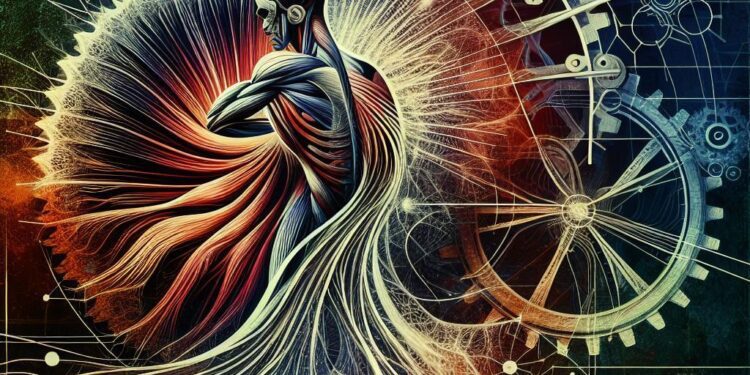Can Chronic Pain Cause Muscle Weakness? Unpacking the Connection
Nestled within the hustle and bustle of our daily lives, chronic pain can be an invisible yet relentless adversary. It whispers through the void of sleepless nights, stubbornly takes root in the very fibers of our being, and often, seems to command our muscles with an iron fist. But can this seemingly unseen burden be powerful enough to sap the strength from our bodies, leaving us facing muscle weakness in its wake?
When we think of chronic pain, we often picture an unyielding ache that exists despite our best efforts to quell it. This persistent discomfort, which can stem from conditions like arthritis, fibromyalgia, or even an old injury, is notorious for its longevity and resistance to traditional pain relief methods. Yet, what many may not realize is that the tendrils of chronic pain can stretch out far beyond the regions it initially invades, potentially influencing other physiological aspects such as muscle strength.
Understanding the link between chronic pain and muscle weakness is crucial for both sufferers and healthcare providers. To unravel this complex relationship, we must delve deeper than just the surface pain. We need to explore how pain pathways, muscular responses, and even psychological factors can intertwine to create a physically debilitating scenario. In this article, we will journey through the physiological processes involved, examine the latest research, and discuss the implications of this connection for effective pain management.
Prepare to engage with a narrative that turns the abstract into tangible understanding. We’ll explore the body’s response to chronic pain, how it influences muscle function, and what steps can be taken to mitigate this dual-struggle. Whether you’re a chronic pain sufferer seeking answers, a caregiver, or simply an inquisitive mind, this article promises to shine a light on an often-overlooked consequence of chronic pain, offering insights that may pave the way to a better quality of life.
Detailed Answer
Certainly, chronic pain can contribute to muscle weakness. When an individual experiences persistent pain, they often alter their movements to avoid discomfort, leading to muscle disuse and atrophy. Below are some common mechanisms through which chronic pain can lead to muscle weakness:
- Pain Avoidance Behavior: People with chronic pain often avoid certain movements that aggravate their condition. This avoidance behavior reduces muscle activity and can result in atrophy over time.
- Nerve Damage: Chronic pain conditions like neuropathy or sciatica can cause nerve damage, which impairs nerve signals to muscles, thereby causing weakness.
- Inflammation: Prolonged inflammation can damage muscle tissue directly and contribute to fatigue, further weakening muscles.
Effective management of chronic pain and associated muscle weakness often involves a multifaceted approach:
- Medical Interventions: Prescription medications, nerve blocks, and surgical options can help manage pain and prevent muscle deterioration.
- Rehabilitative Therapies: Physical therapy and occupational therapy can help strengthen muscles and improve functional mobility, reducing the impact of pain.
- Exercise Regimens: Regular, gentle exercises such as swimming, yoga, and Pilates can enhance muscle strength without exacerbating pain.
- Nutritional Support: Proper nutrition, including adequate protein and anti-inflammatory foods, can support muscle health and recovery.
Consulting healthcare providers can help tailor a plan suited to individual needs. Below is a summary table of various treatments and their benefits:
| Treatment | Benefit |
|---|---|
| Physical Therapy | Improves strength and functional mobility |
| Medications | Reduces pain and inflammation |
| Exercise | Enhances muscle strength and flexibility |
| Nutritional Support | Supports muscle repair and reduces inflammation |
Practical Advice
When it comes to chronic pain, one of the lesser-known yet significant consequences is its potential to cause muscle weakness. This often happens because prolonged pain can affect your body’s ability to function normally, leading to disuse of certain muscle groups and subsequent atrophy.
There are several approaches to addressing muscle weakness caused by chronic pain:
- Physical Therapy: Engaging in physical therapy can help to strengthen muscles that have weakened due to inactivity. A physical therapist can create a tailored exercise program to slowly build strength without exacerbating pain.
- Medication Management: Using appropriate pain relievers can help manage chronic pain in such a way that it becomes more feasible to participate in strengthening activities.
- Balanced Diet: Consuming a diet rich in protein, vitamins, and minerals can support muscle health and recovery. Nutritional supplements might also be recommended by a healthcare professional.
- Alternative Therapies: Techniques such as acupuncture and massage therapy can alleviate pain, potentially making it easier to engage in physical activities that build muscle strength.
Below is a quick glance at common interventions for chronic pain and their effectiveness:
| Intervention | Effectiveness |
|---|---|
| Physical Therapy | High |
| Medication | Moderate to High |
| Diet and Supplements | Moderate |
| Alternative Therapies | Variable |
addressing muscle weakness in the context of chronic pain involves a multifaceted approach. Combining physical rehabilitation, effective pain management, proper nutrition, and exploring alternative therapies can collectively improve muscle strength and quality of life.
Scientific Insights and Research
Chronic pain can indeed lead to muscle weakness, a connection often overlooked yet profoundly influential on overall health. Research indicates that persistent pain can inhibit normal muscle function by altering neuromuscular communication. In simple terms, when you’re in pain, your brain sends fewer signals to move muscles, leading to reduced strength over time. This can create a vicious cycle where pain leads to weakness, making movement more challenging and increasing the risk of further injury.
- Medical Interventions: Doctors may prescribe medications like muscle relaxers or recommend nerve blocks to alleviate pain and restore some muscle function.
- Physical Therapies: Regular physical therapy can help break the pain-weakness cycle. Techniques often include strength training, stretching, and modalities like heat or ultrasound therapy.
- Lifestyle Modifications: Activities such as gentle yoga, swimming, and mindfulness-based stress reduction can enhance mobility and muscle strength without exacerbating pain symptoms.
To summarize, the relationship between chronic pain and muscle weakness can be managed through a combination of medical treatments, physical therapies, and lifestyle changes. Here is a simplified overview of their effectiveness:
| Treatment | Effectiveness |
|---|---|
| Prescription Medications | High |
| Physical Therapy | Moderate to High |
| Lifestyle Modifications | Varies |
Sources List
“`html
When exploring the complex relationship between chronic pain and muscle weakness, leveraging reliable sources is essential. Below is a compilation of reputable references to guide readers in their quest for knowledge:
- Mayo Clinic - Chronic Pain: This comprehensive resource offers insights into the causes, symptoms, and treatment options for chronic pain, emphasizing the effects it can have on muscle strength.
- National Center for Biotechnology Information (NCBI): Featuring peer-reviewed research studies, this source provides scientific evidence on the correlation between prolonged pain and muscle atrophy.
- PainScale: A dedicated platform for pain management, PainScale covers a broad spectrum of pain-related issues, offering practical advice on mitigating muscle weakness associated with chronic discomfort.
- American Family Physician: This peer-reviewed journal from the American Academy of Family Physicians gives clinical insights and treatments for chronic pain and its impact on muscle strength.
| Source | Type of Resource | Link |
|---|---|---|
| Mayo Clinic | Medical Information | Visit Page |
| NCBI | Research Study | Visit Page |
| PainScale | Patient Resource | Visit Page |
| American Family Physician | Clinical Journal | Visit Page |
“`
In Summary
the intricate relationship between chronic pain and muscle weakness unravels much more than just physical discomfort. The interplay between persistent pain and the deterioration of muscle function is both a challenge and an illuminating subject for medical science. Chronic pain, with its multifaceted origins—be it neuropathic, nociceptive, or a result of complex regional pain syndrome—can indisputably lead to muscle weakness. This weakness is often a consequence of prolonged disuse, altered neural pathways, and the body’s physiological adaptations to pain.
Understanding this connection emphasizes the critical need for a holistic approach to management, where treating the pain alone isn’t enough. A comprehensive strategy involving physical rehabilitation, pain management techniques, psychological support, and sometimes pharmacological intervention is essential to attenuate the impact of chronic pain on muscle strength and overall functionality.
Furthermore, the awareness and recognition of chronic pain’s broader implications underscore the importance of early intervention. Targeted exercise programs, adaptive lifestyle changes, and innovative therapies can collectively contribute to mitigating muscle weakness, fostering better quality of life, and enhancing patient outcomes.
Ultimately, the journey through chronic pain is a deeply personal one, filled with both challenges and opportunities for growth. By embracing a multi-dimensional approach, we can hope to bridge the gap between suffering and strength, illuminating pathways to relief and resilience. As we continue to explore and understand these complex interconnections, the future holds promise for more effective treatments, providing hope and strength to those grappling with the relentless grip of chronic pain.
The story of chronic pain and muscle weakness is not just a medical narrative but a human one, reminding us of our inherent strength and the boundless potential for healing.













